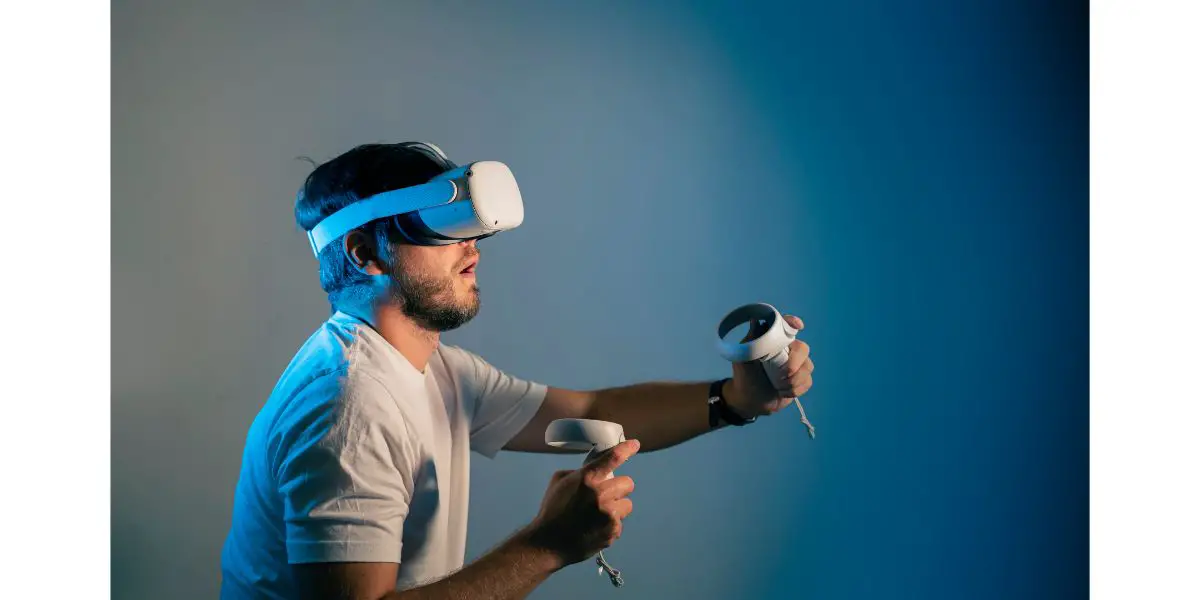Disclaimer: This post may contain affiliate links, meaning we get a small commission if you make a purchase through our links, at no cost to you. For more information, please visit our Disclaimer Page.
One of the more common errors that Oculus Quest players encounter is the “no command” error. That’s not to say that it’s a common error, only the most common of the errors that players have to deal with from time to time.
The “no command” error isn’t very self-explanatory, so if you see it pop up on your display, there are a number of issues that possibly caused it. Firmware updates, charging, or a jam-packed cache are the most probable.
Fortunately, it’s not the kind of error that will cause your Oculus Quest to melt down and fail permanently. It usually just means there’s a glitch in there somewhere and now you have to fix it. On the bright side, we have some solutions that will most likely do the trick.
Table of Contents
5 Ways To Troubleshoot Oculus Saying “No Command” Error
1. Perform a Soft Reset
A soft reset on the Oculus Quest is exactly what it sounds like—a regular reset that will generally clear up any glitches or hiccups in the software that might be causing the “no command” error to prompt whenever you’re doing something you know you should be able to do.
There are two ways to perform a soft reset and it doesn’t matter which one you decide to do—the end result is the same. One requires you to wear the headset and the other does not.
Wearing the Headset
- Put the headset on like you’re about to play a game
- Press and hold the power button on the right of the unit
- Hold the button until you see the power off option
- You should also see the option to restart
- Select “restart”
- This will initiate a standard, soft reset
Without Wearing the Headset
- Press and hold the power button on the right side
- Since you aren’t viewing the screen you will have to hold it for 10 seconds
- Release after ten seconds and wait an additional minute
- Press and hold the power button to power up the headset again
That’s all there is to either option. This simply performs a soft reset and should clear the cobwebs (so to speak) and eliminate the “no command” error. Of course, if there is something deeper going on, it may not do the trick.
However, the soft reset is an age-old recipe for success, having worked on thousands of devices since the days of the Atari. The vast majority of the time, performing a soft reset will do the trick.
2. Clear Out the Cache
This process is a little more involved than the standard, soft reset process. You’ll need to get your Oculus device into what is called, “recovery mode.” In this mode, you will be able to wipe out the cache partition.
A cache is just what it sounds like, a pile of items kept around in case you need to use them but don’t have any use for them at this moment in time. When it comes to software, a cache is a place where images, files, code, and other useful things are kept so they don’t need to be downloaded again later.
Unfortunately, this cache can grow quite large and it will inevitably make your device run slower after so much has accumulated. The best thing to do is go in and wipe it out. Unfortunately, Oculus devices don’t offer a simple, straightforward way to do this.
- To enter Recovery Mode, power off the Oculus
- Hold the power button and both volume buttons down until the Oculus powers back up
- When it powers on again, release only the power button and continue holding the volume buttons
- The “Recovery Mode” menu should appear onscreen
- Select “Wipe Cache Partition”
- Select “Reboot System Now”
- Wait for the Oculus to power back up
- Attempt to do what you were doing before you got the “no command” error
It’s a good idea to do this every so often anyway, as it clears up space and, like a soft reset, clears the cobwebs so to speak. There’s no to delve into the software mechanics behind it—suffice it to say, it works often and is one of the several go-to solutions for solving the no-command error problem.
For an option to clear your cache while using the headset, check out this quick and helpful video by the YouTube channel “Tricks Tips Fix”:
3. Charge the Oculus Quest
This may sound mundane and a tad bit ridiculous but you would be surprised at home many things tend to go wrong when you have a low battery. Simply set it to the side for a little while and let it go through a full charging cycle.
Once it’s fully charged, give it a try again and see if you still encounter the no-command error. We often find ourselves thinking of the most complicated solution for issues we don’t understand when it’s really quite simple.
4. Stuck Buttons
If you’ve never used a game console or played a game on the PC without eating or drinking something, you’re a rare breed. Picking up the Oculus Quest after eating something sticky is fairly common, especially when it comes to kids.
Over time, those sticky fingers transfer to the buttons, making them sticky too. Or, it could simply be a combination of dirty hands and dust. No matter what caused it, sticky buttons are an inevitability if you don’t clean your devices regularly.
The no-command error is fairly commonplace when the buttons on the Quest are stuck in the pressed position. The best way to check is to start working your way through the buttons, testing them one by one. Off course, you should turn the Quest off before you begin.
Press the volume buttons up and down, ensuring that they work and you can clearly feel them press and dislodge naturally as buttons should. If you feel one of them dislodge when you first press it down, you’ll immediately know that was the problem.
Move the lenses back and forth as well, making sure they move correctly and are not stuck in place. It’s also a good idea to go ahead and clean in and around the lenses and buttons as you work your way through.
5. Do a Factory Reset
Sometimes, the best solution is the worst solution. The fact that you have to have an account and the associated app certainly helps. The reason is that when you factory reset the Oculus Quest, you’re essentially returning it to its original status, the day it came out of the box.
The good news is that you can do a cloud backup for the Quest, ensuring that all of your data is saved. So, the first thing you need to do is back up all of your data on the cloud.
- Put your Oculus Quest headset on
- Go to the clock on the left side of the screen
- Go to “Settings”
- Select “System”
- Locate and select “Backup”
- Ensure that “Cloud Backup” is enabled
If it wasn’t enabled before and you toggled it on, it will start backing up and you need to leave it alone for a little while to do its work. The more you have on it, the longer it will take. But you want to make sure that it’s completely backed up before you factory reset it.
The factory reset process is fairly straightforward and shouldn’t take you too long.
- Turn off the headset and make sure it is off
- Press and hold the power button and the volume down button
- Once the Oculus Quest turns back on, you’ll see “USB Update Mode”
- Press the volume down button until you highlight “Factory Reset”
- Press the volume down button again until your see “Yes, Erase and Factory Reset”
- Confirm again
Factory Reset with Your Smartphone
This might be a little easier for those who aren’t as familiar with the ins and outs of dealing with the Oculus Quest. You can download the app from the Google Play Store or the Apple App Store.
Make sure you create an account or log in to your existing account once you are done downloading and installing the app.
- Open the app
- Log in
- Go to and select “Settings”
- Select the Oculus Quest
- Select “More Settings”
- Scan until you see “Factory Reset”
- Select it and follow the instruction to confirm the reset
Laptop or PC Factory Reset
Last, you can factory reset your Oculus Quest by going to https://secure.oculus.com/my/devices/ and logging into your profile.
- Log in
- Select your device
- Scan and find “Delete Device Data”
- Verify
- Confirm
No matter what way you decide to do it, the result is the same—your Oculus Quest will be restored to its original, factory state.
From that point, you can log in and download your backup to return the Quest to the way it was before you did the factory reset.
It’s the most pain-in-the-neck way to get the job done, but it’s probably one of the most effective ways as well.
All Things Considered
There you have it, five troubleshooting fixes that should eliminate the irritating no-command error. Hopefully, you’ll never run into the error and have to deal with it, especially regarding a factory reset.
The best maintenance is the preventative kind. Devices like the Oculus Quest are weak against dirt, dust, and other debris. Establish a cleaning routine where you simply go over the device once a week and clean up around the buttons, lenses, and the critical components it depends on.


